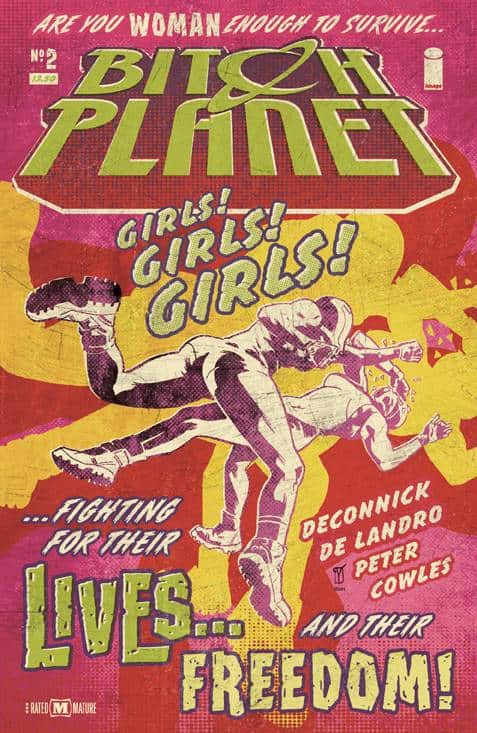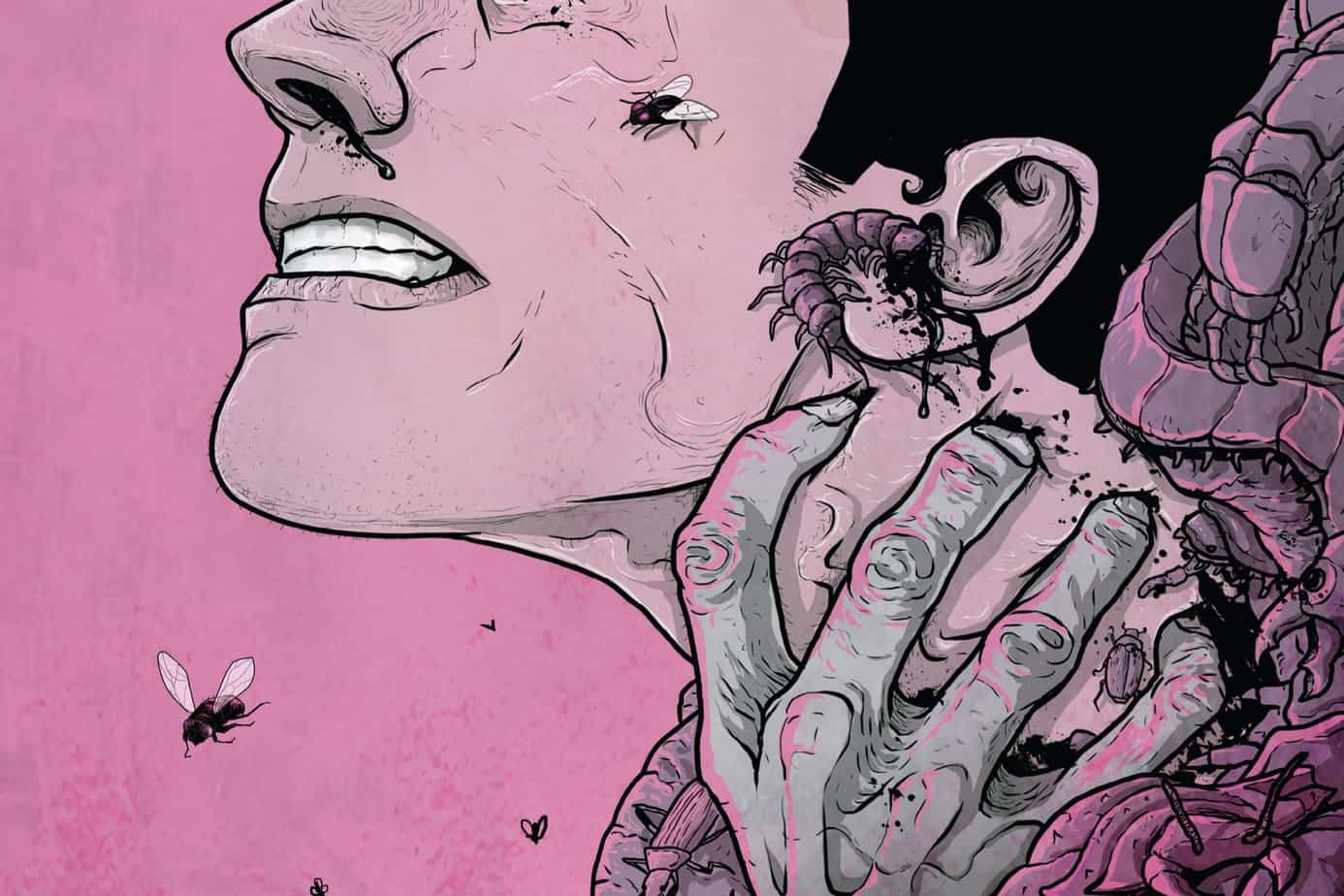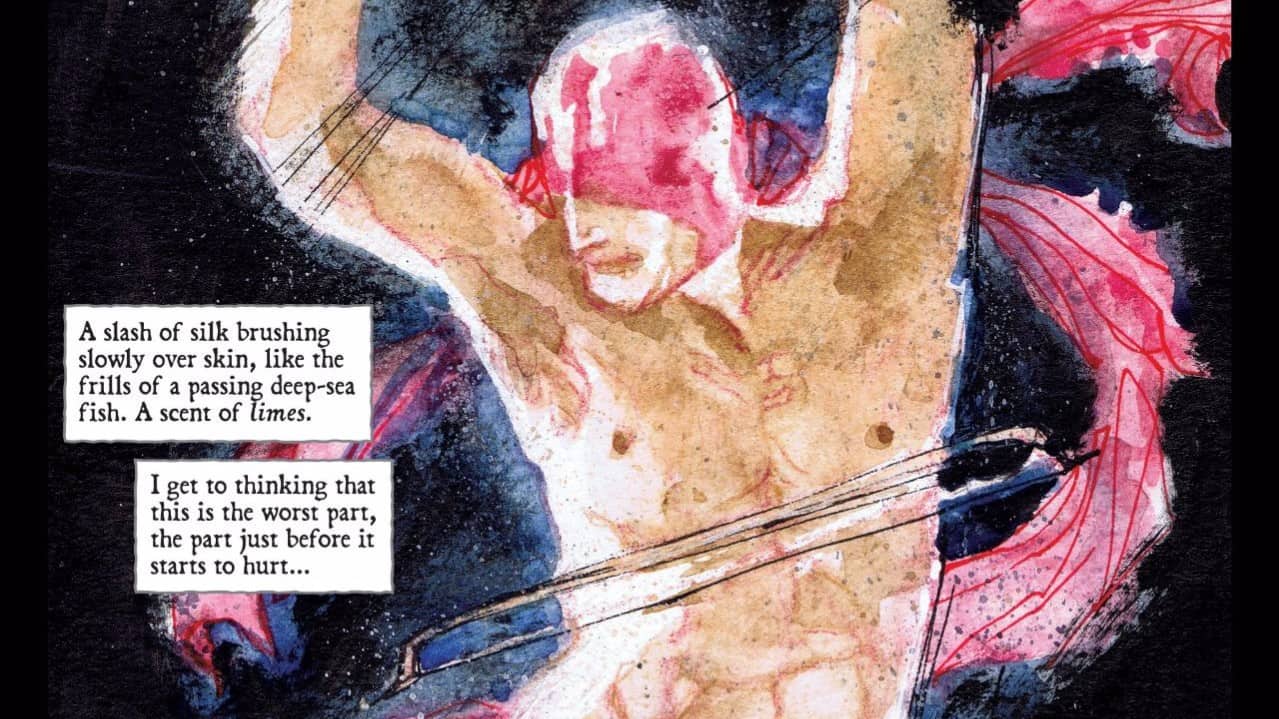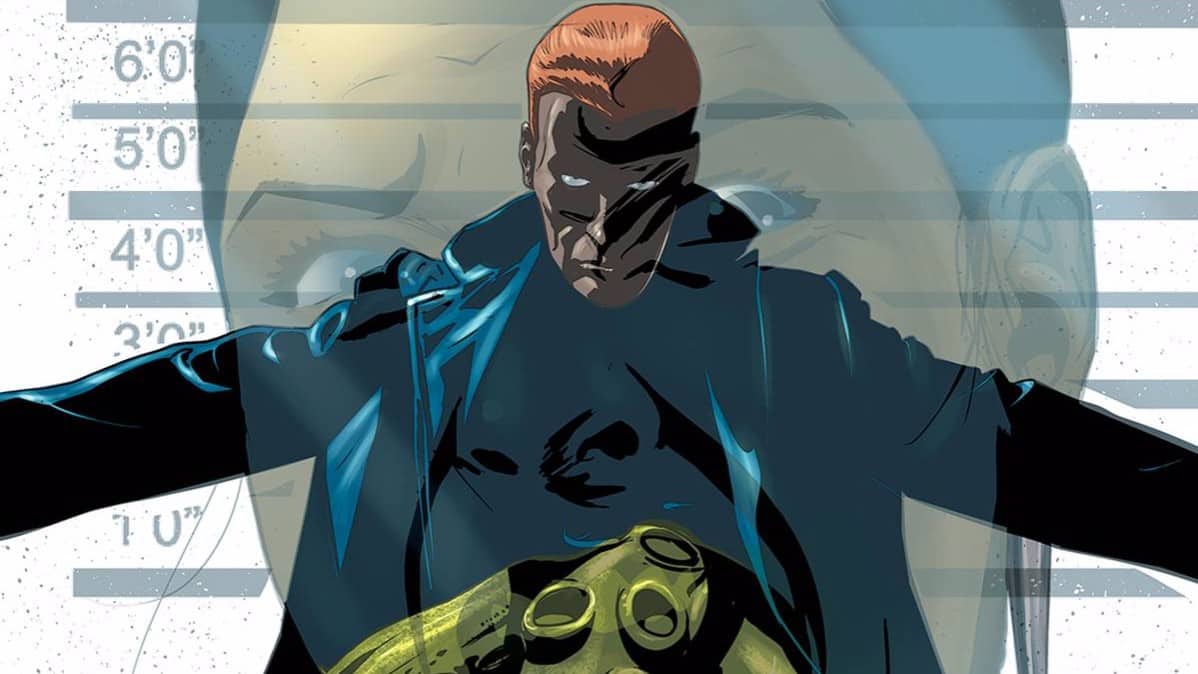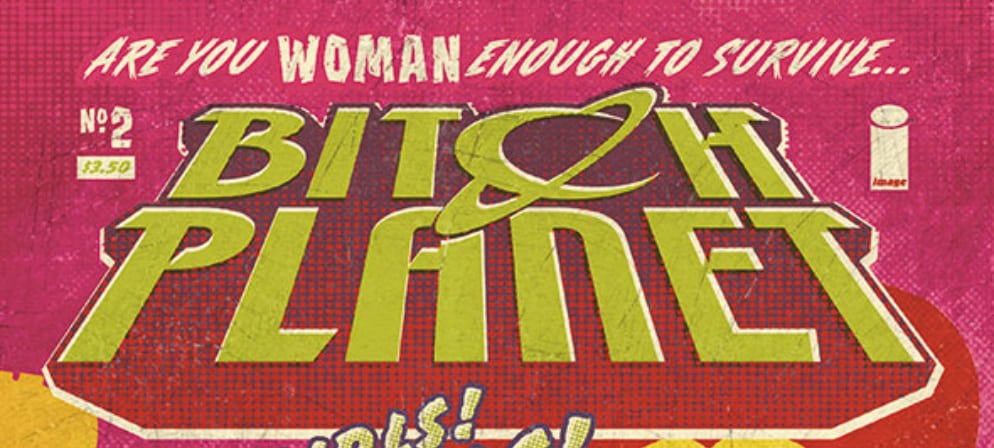
Comic Review: BITCH PLANET #2
BITCH PLANET #2
Writer: Kelly Sue DeConnick
Artist: Valentine De Landro
Colorist: Cris Peter
Publisher: Image Comics
Price: $3.50
Since last we discussed Bitch Planet, the title has gained quite a bit of attention, predictably so. I say “since” but I’m basically referring to the 24-hour period between it hitting shelves and the reviews hitting press. It already had quite a spotlight to begin with but it’s now officially a fan favorite. Even the critics who have found flaws to pick apart still acknowledge how fantastic a comic it is. And, like a sophomore album, issue #2 has arrived with not nearly the fervor as the debut, reminding us of just how short an attention span the comic book reading audience in general has. This is generally the pattern with comics it seems; everyone gets excited about a new title yet even when it is reviewed positively and received glowingly, it suffers a considerable loss of traction with each following issue. Analysing why this is the case is a far weightier discussion than I can spare in this review, but one suspects it may have something to do with the anti-social nature of the current comics industry; when was the last time you talked with another reader about the merits or flaws of an ongoing title besides the debut issue?
Kelly Sue DeConnick, the writer of Bitch Planet, doesn’t appear to be concerned about losing her readers’ attention with the world-building and plot-weaving she fills this issue with. That’s not to say it’s entirely free of action; heroine Kam unleashes her rage in a single blow, shattering a video screen, reminding us again of what a badass she is. There’s a blackly amusing melee in the background of another scene that imbues the goings-on with life but outside those two small moments, the rest of the issue is all intrigue and character development. It’s a huge feat on DeConnick’s part that all this exposition and character interaction never feels rote or draining. The constant shuffling from one section of the narrative to another keeps the reader on their toes, bouncing from inmates making clandestine plans to media overlords devising their own schemes, with heads butting on both sides. There’s one particular sci-fi trope that’s introduced; the holo-deck, and it is played with satirically to great effect, and if not for the way the tables are reversed halfway through the scene, it might feel ham-fisted (or maybe just a little too real). The best part of this issue, though, is what it sets up.
Wait, hold on. I take it back; the best part of this issue is Valentine De Landro’s art. Valentine has yet another bold take on dystopia to bring to life and nails it again by fearlessly keeping every scene dialed up. The opening gala banquet gets a massive two pager that reminds us that this is still very much a future of haves and have-nots, with enough detail to make the open space feel full on the page. By contrast, the massive empty space that Kam is confronted by feels remarkably empty, thanks to the rigid grids of the screens that line the walls of her “confession” cell. As those monolithic walls morph into a mock countryside, De Landro’s skill is really put to the test, depicting both the real space behaviors of Kam’s jailor and what’s projected onto the screens. There’s a fantastic moment where the modest but effective panel layouts merge with this dual narrative, a four-panel grid overlaying a woman’s face with the animal murder in a broken manner that’s one of the best visuals in the book so far.
There’s just as much effort from the coloring and lettering department. Cris Peter assists perfectly with the contrasts, rendering the gala in muted, safe hues that lull the eyes so that, when the “confession” scene starts, it’s shocking, all eye-melting pinks and garish yellows. Then there’s the ripe, alluring green of the virtual Georgia, which take on a nauseating rot as the confrontation unfolds. And the lettering by Clayton Cowles is just as versatile, with highly descriptive sound FX lettering bursting into panels, like the static jolt of a massive swarm of screens flickering on, or the rhythmic gear-clicking of blocks moving into place, or even the struggled panting of Penny Rolle. I was surprised that a shattering screen didn’t get an accompanying FX though.
I’m just now noticing an absolutely brilliant moment near the end of the treadmill bit involving Penny and an enforcer who she is fighting with in the distant background of the shot. I won’t give away too much but I did seriously laugh hard when I saw why she had climbed back onto the treadmill for a moment. It’s small moments like those that make analyzing comics like Bitch Planet worthwhile.
The newest issue of Bitch Planet proves that Kelly Sue DeConnick is more than a shit-stirrer. She’s making a comic here, one with multiple layers of storytelling, all of it helping weave together her vision of a dystopian future unlike any other. This isn’t just a feminist comic book; it’s a comic book about what kind of dystopian future our current society would have and why it would be that way. But it’s also a comic book, and it gets to be fun and weird and funny too. What #2 of Bitch Planet does is show that it’s more than just three chords and a scream.

